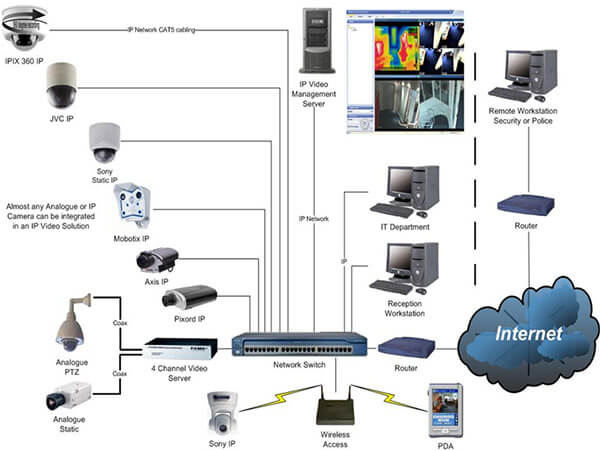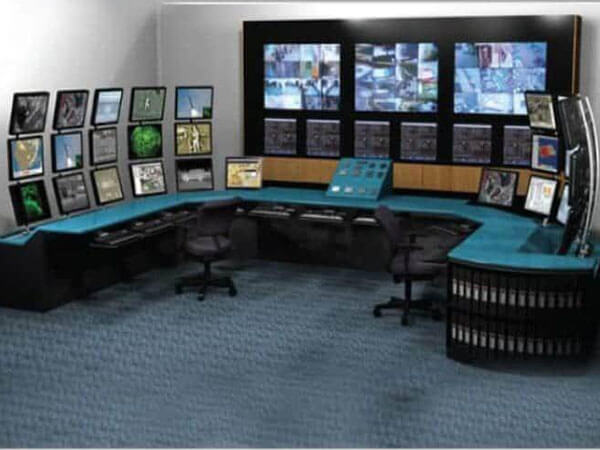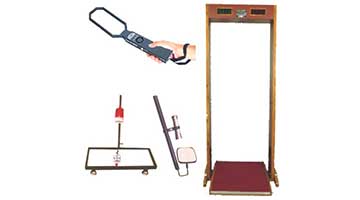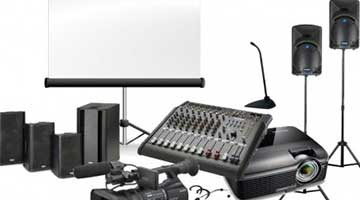
Surveillance Cameras
Surveillance cameras are considered one of the most important requirements of the times because of the highest level of security provided by surveillance cameras, as surveillance cameras carry out complete surveillance in many places without the need for an individual to monitor them throughout the day. Images are for long and short distance monitoring in order to ensure the safety of installations and buildings, both inside and outside .
Types of surveillance camera systems:
Cameras transmit the signal that is captured in two ways, and each type has advantages and disadvantages. In our selection of a type, we depend on the conditions of the place, the working conditions of the camera, the distance from which the signal is transmitted, and the quality of the image to be captured .
Types of surveillance camera systems:
Wired Video surveillance system (cables system): It is a camera system connected to wires and cables. This type has disadvantages, including the inability to extend the cable to all areas and the inability to choose the installation location with the difficulty of transporting the cameras later .
Wireless Video surveillance system: It is a surveillance camera system without the use of wires or cables using Wi-Fi technology (this type is installed without the use of cables through the wireless router network and is monitored through the Internet and viewed from the smart phone, the possibility of recording on the computer with the night vision infrared feature).
IP Addressable Video Surveillance Cameras Systems:
This system uses cameras to monitor some places that use the Internet to transmit video that is encrypted and is connected directly via data cables (Internet) to a recording device (Network Video Recorder), which is the modern or new generation type called IP cameras, which are cameras A network that is connected directly to the router of the Internet and transmits data over the network. It is connected with display and recording devices, and it is also an infrared camera equipped for night surveillance.
CCTV Conventional Video Surveillance Camera Systems:
In this system, conventional surveillance cameras are used that are connected directly via shower cables to a recording device (Digital Video Recorder), or they are connected to a computer using a Network card.
Types of Surveillance Cameras:
Surveillance cameras differ in terms of shape, use, method of connection and purpose, including external, internal, mobile and fixed.
Outdoor External cameras: They are surveillance cameras that are used in open areas and places as they are characterized by their ability to withstand all types of weather and environmental and weather factors such as severe heat and cold used in monitoring the street or building from the outside.
Indoor cameras: They are the cameras that are installed and used in closed areas that are not exposed inside buildings, and therefore they monitor the buildings from the inside.
PTZ Cameras: These cameras are suitable for wide areas as they work in all directions, left and right, up and down. They can work in all directions and shoot on a wide range and the ability to rotate up to 360 degrees horizontally and 90 degrees vertically.
Wireless cameras: These cameras transmit the signal without wires and connect to the internet via Wi-Fi and are used in places where cables cannot be laid.
Hidden cameras: It is an invisible camera for espionage or protection purposes without notice to the targets
Technical specifications
Accuracy and clarity-Wide Dynamic Range –Vary Focal-
Infrared work- SNV- P-iri
Types of recording devices:
Digital Video Recorder (DVR)
These devices are used to record and display videos and store the video on a hard disk or external flash memory. The types of these devices vary according to the accuracy and clarity of the camera connected to it, and the recording devices differ in order to suit the quality of the cameras, whether they are high quality, weak or very high, and they also differ according to the storage capacity and the number of distribution ports for the cameras, including devices with 4 ports up to 64 ports
Network Video Recorder (NVR)
is a specialized computer system that includes a software program that records video in a digital format to a disk drive, USB flash drive, SD memory card or other mass storage device. An NVR contains no dedicated video capture hardware. However, the software is typically run on a dedicated device, usually with an embedded operating system. Alternatively, to help support increased functionality and serviceability, standard operating systems are used with standard processors and video management software. An NVR is typically deployed in an IP video surveillance system.
It is a network recording device that records from the network cameras directly.
Advantages of network recording devices
A large number of network cameras can be connected to it
The system can be monitored from any computer connected to the network or mobile
Make the most of the components of the system because it deals with digital signals
Owning a large number of entrances and exits
Types of connection cables:
Coaxial cable
This type of cable allows video to be played on surveillance cameras using and operating a single cable. It is available in the form of reels up to 500 or 1000 meters in length. It is considered the best type for use in CCTV. This cable is made of copper with 95 percent copper copper. It is very good for low frequency signals.
UTP Internet cables
UTP stands for Unshielded Twisted Pair cable. UTP cable is a 100 ohm copper cable that consists of 2 to 1800 unshielded twisted pairs surrounded by an outer jacket. They have no metallic shield. This makes the cable small in diameter but unprotected against electrical interference. The twist helps to improve its immunity to electrical noise and EMI
It is a cable consisting of four pairs and called Cat 6 and is used to transfer data through the Internet and the data transfer speed reaches 100 megabits and sometimes 1000 megabits per second.
Twisted-pair cables
If we look at this cable from the inside, we will notice that it consists of a set of wires; These wires exist in pairs so that each pair has its own color, but what makes this cable different is that it is not surrounded by any shielding cover, and this type of cable is not used with all types of surveillance cameras; However, it is only used with both network and analog cameras so that it varies in terms of the monitoring distance


















